Panbo test fleet adds a fast outboard: Gizmo Junior
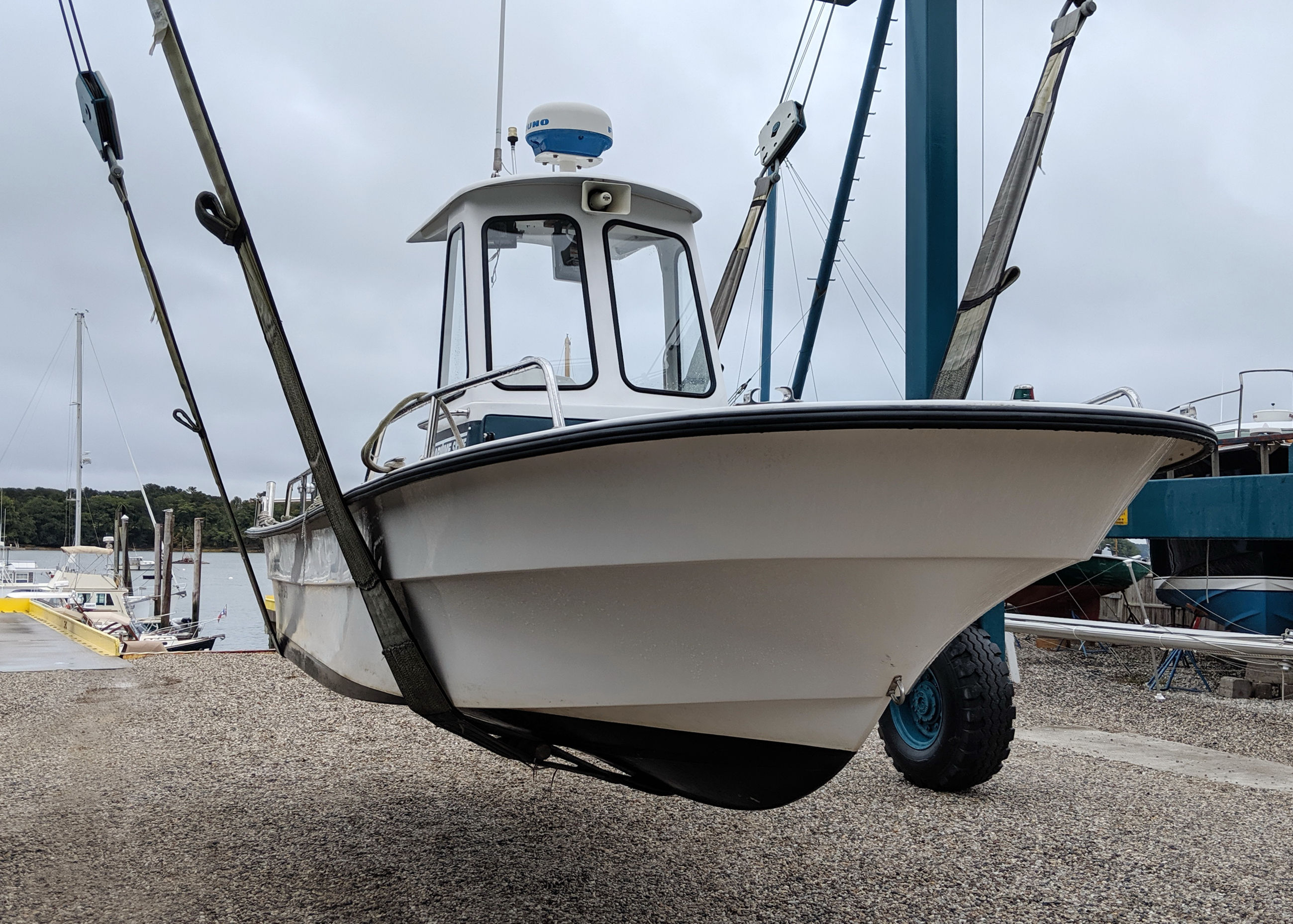
I’m generally content to operate at trawler speeds these days, on and off the water. But — boy, oh, boy — taking on a new boat has definitely brought out the kid in me. Though it was only a few weeks ago when I finally realized that rebuilding the 14-foot power cat (and original Gizmo) is not in my future, the new plan has already hosted some electronics testing that would have been much more difficult with the 37-foot Gizmo, and it’s a different kind of pleasure on the water. Say hello to Gizmo Junior.
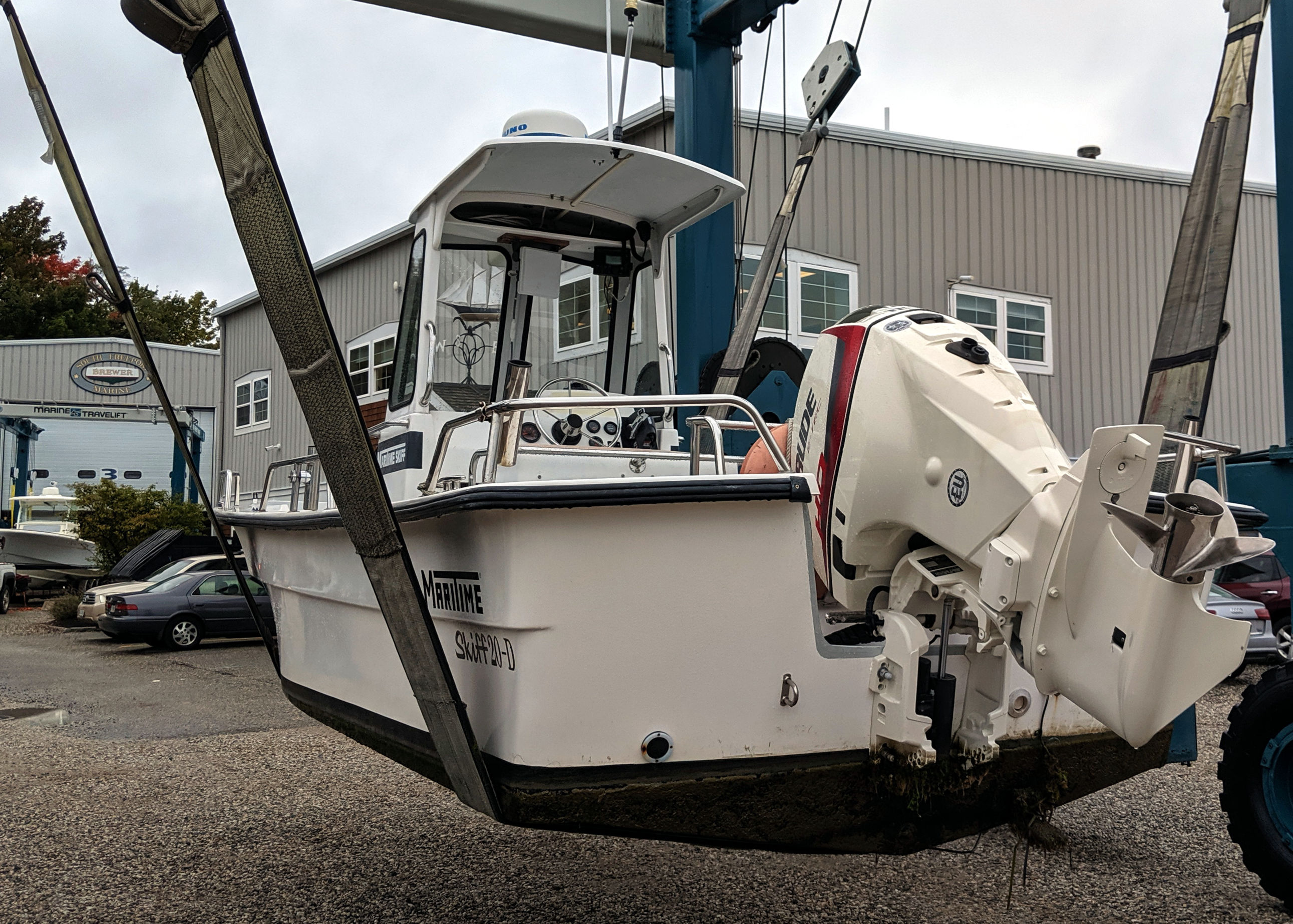
Junior is a year 2000 Maritime Skiff 20-D quite similar to the Maritime 210 Defiant still being manufactured today except for the early version of the pilothouse now seen on the 210 Patriot. These hulls are well proven here in New England and the 20-D was built during the transition from a plainer workboat style to the more finished Maritimes; in fact, the “D” apparently stands for the deck mold that hadn’t been available before.
I’m already confident that this Maritime 20 is still in great shape with decades of life left, but I’m absolutely tickled to begin my stewardship with a nearly new 2019 Evinrude E-Tec H.O. 115. This is the outboard I probably would have chosen if I’d started fresh, because of its impressive technology, and a giant plus is a 10-year warranty serviced by the crack team at Bamforth Marine (who have already been a big help before and after the sale, though they weren’t involved).
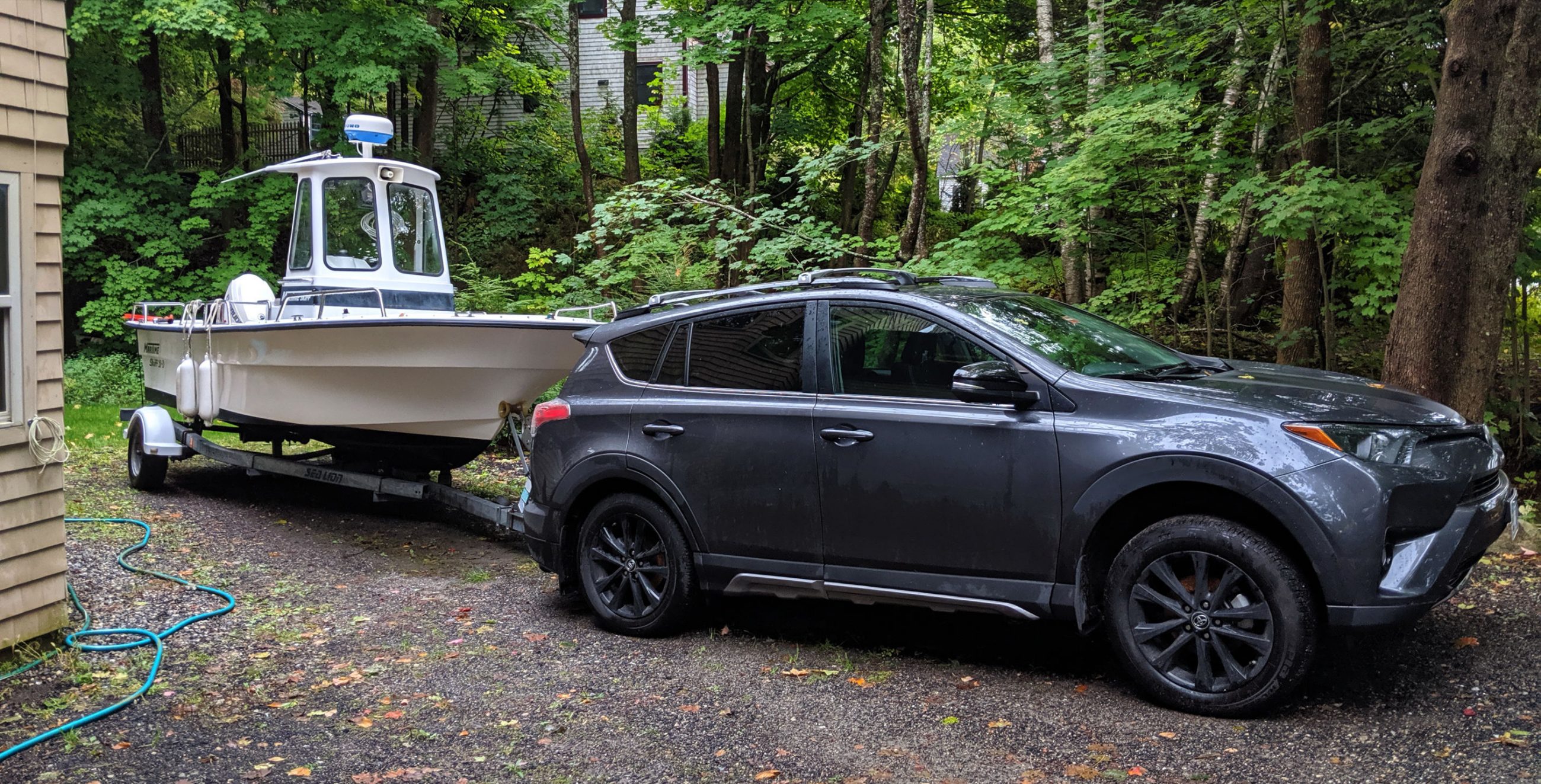
This boat size is especially right for me because it’s the maximum that will fit in the town-owned rental slip where I’ve long kept tenders and such. I can also tow it with my Toyota RAV4 Adventure — though a truck would have been more relaxing for the haul from Freeport — and it fits in front of my shop, though I’ll admit to getting a friend to do the backing.
At any rate, having located, trialed, purchased, and hauled the boat home in about a week, I only did some cleaning and minor modifications before getting Junior back in the water again. That’s an excited boy with winter in the air.

Going nearly airborne off a lobster boat wake at 24 knots during my first run as owner/operator further confirmed the Maritime’s solid build and smart design; nothing broke or even squeaked, and we landed reasonably well. And a family try-out in brisk choppy conditions also went well, with some big kids enjoying the bumps even under the bow dodger and only a dollop of water coming aboard. But when a rare windless October day came along, Junior went to work.
As shown above, I’ve temporarily moved the Furuno 1623 radar display from its overhead install because it crowded my height’s sightlines forward, and also because I don’t know which of the electronics I want to keep on the way to a more ergonomic helm. The fairly old 1623, for instance, is turning out to be useful despite how spoiled I am by solid-state Doppler radars, and might work well on a RAM mount with the never-before-used NMEA 0183 connection making it into an instrument repeater and putting the active waypoint on the radar screen.
But the main goal this week was testing the very temporarily installed Si-Tex MDA-5 Class B/SO AIS — i.e. powered with a Weego battery brick and using a stubby emergency VHF antenna — and my about-to-expire T-Mobile Test Drive. The latter was a great disappointment, as I just reported in the comments to that entry, but the Si-Tex, and Junior, did well.

Navionics Boating steadily got GPS and AIS from Si-Tex WiFi for 44 nm 
Si-Tex MDA-5 SO Class B AIS was often tracked by Marine Traffic shore stations 
The inReach Mini also tracked the trip as seen on EarthMate app 
Years of archived inReach tracking show that I missed Pickering I
For instance, the Si-Tex MDA-5 WiFi data output was automatically discovered by the iPad’s Navionics Boating app (upper left) and provided it with solid GPS and AIS information throughout the 44 nm test trip. This newish Navionics feature did not work well in big Gizmo’s far more complex WiFi and electronics environment — which is why I still think that Navionics should add an auto-discovery on/off toggle — and I also got to see the improved AIS display Ben S recently covered.
While it’s a guesstimate, I also think that the Marine Traffic AIS tracking seen in the upper right screenshot would be even more sketchy — there can’t be enough volunteer stations — if the AIS had been a conventional 2W Class B instead of a 5W SO. More importantly, vessels should have seen a more realtime Junior on AIS because of SOTDMA’s faster refresh rate when going over 14 knots, and I hope to validate that when I dig into the data logged by the Yacht Devices Voyage Recorder that was monitoring the Vesper AIS transponder on senior Gizmo.
Finally, the Garmin inReach Mini I’ve gotten quite fond of was also tracking my fast loop around the Bays, and I could switch over to the included Earthmate app to see my plot on NOAA raster charts. The inReach was also adding the trip to the vast archive that Garmin hosts, some of which I filter to my ShareMap. But I don’t need the history to know that in 48 years of gunkholing these waters I’d somehow missed the beauty of Pickering Island.
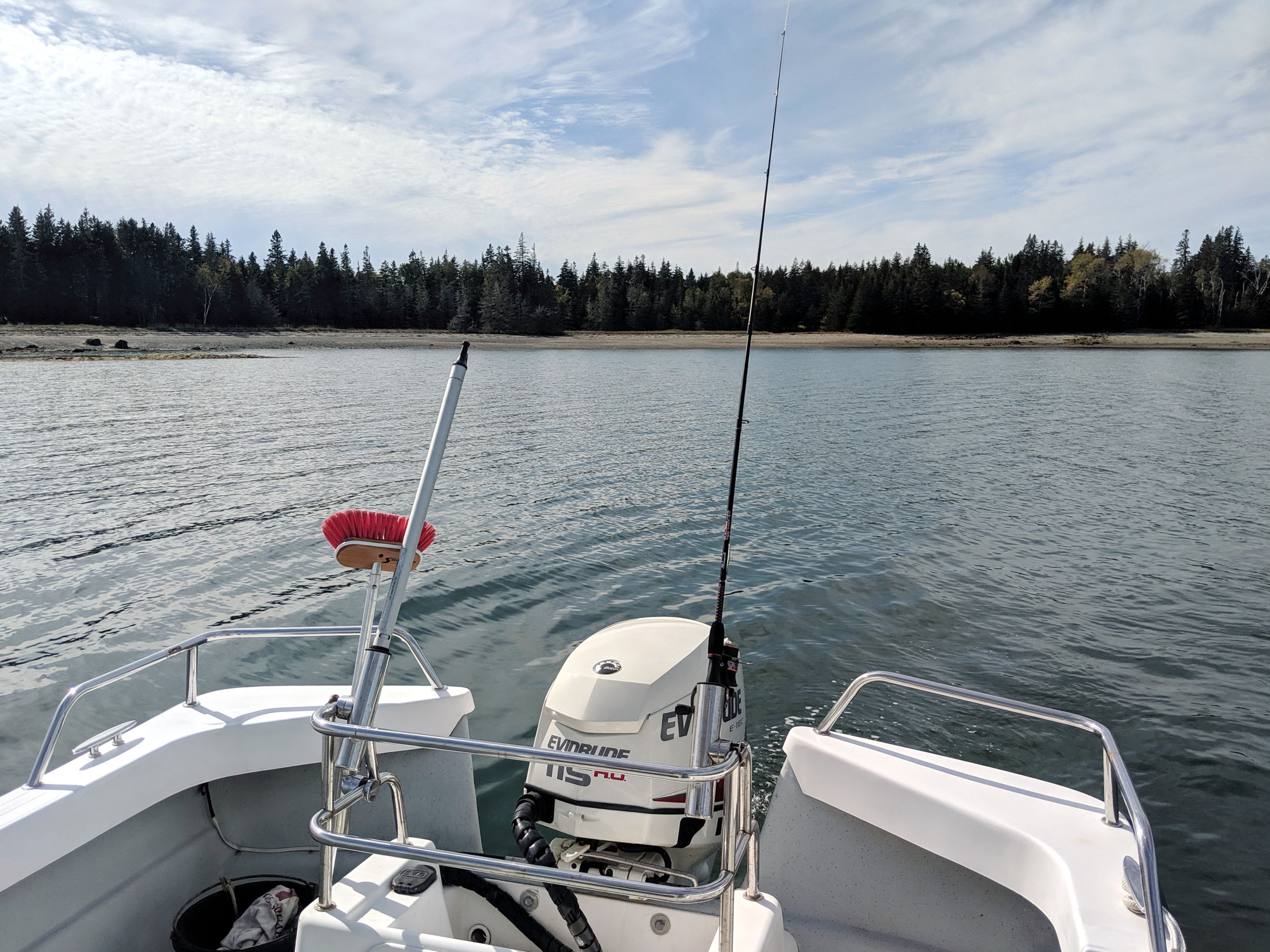
An old friend once told me that the key to a fulfilled boating life is to think in terms of a fleet, not just one great craft for many purposes. And I’m feeling it! Junior was perfect for quickly surveying the beaches and anchorages of Pickering, and will also serve well for a day trip there next summer, though I can also picture settling in here for a while on Senior.
This new (old) boat also offers all sorts of added electronics testing possibilities. In fact, I’ve already tapped into the rich NMEA 2000 data available from this E-Tec outboard range for the last 10 years — but apparently often not used — and I’m tentatively delighted with the results. More to come.
Oh, and I’m happy to add that Ben Stein is also onto the fleet concept. With Have Another Day well settled in Fort Myers, a similar size outboard would be just the thing for exploring the interesting but thin waters thereabouts. And if it works out, that means more new Panbo testing possibilities, winter no problem.






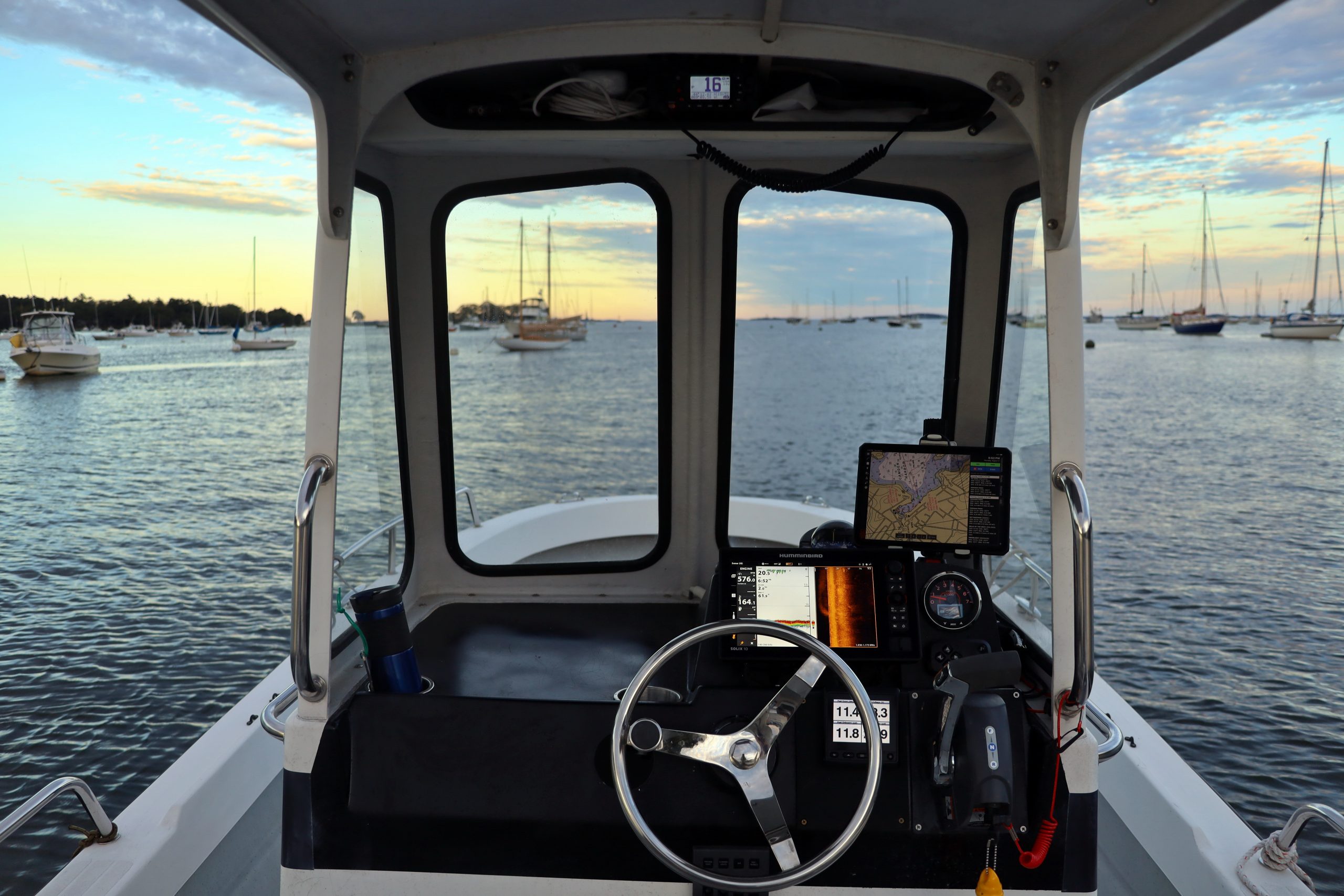










Gadget’s gonna be jealous, Ben 🙂
Im jealous Ben. Before the SallyW I had a 19 ft Boston Whaler with Garmin screen and AIS receiver . Went all over Penobscot Bay . Even out to Metinicus . Good photo boat.
Allan, rides available but, dang, why not a fleet?
I just wish Maritime would have parts for boats that are almost 15 years – no help from the current owner of Maritime.
Evinrude E-TEC engines have had NMEA-2000 data output since 2005, and I believe they were the first outboard engine to offer that feature. Evinrude has also made the connection of their engines to a NMEA-2000 network a very simple process in comparison to other brands of outboards, so I would expect use of NMEA-2000 with E-TEC engines is probably higher than most other brands.
Jim, I’m happy to report that I’ve replaced all the existing gauges on this boat with an Icon Pro Tach with good results and I’m now testing other NMEA 2000 gauges and displays with it. My biggest complaint is confusing Evinrude documentation, so I was really glad to find all the work you’ve done on this subject at Continuous Wave. Thanks!
http://continuouswave.com/whaler/reference/ICONgauges.html
Hi Ben–even more information about I-Command, ICON Pro, and ICON Touch at
http://continuouswave.com/forum/viewforum.php?f=10
Like many boat electronic products, they start simple and get more complex as they evolve. One great feature with ICON Pro: you can initiate winterization from the gauge.
Also, you will love the low-speed fuel economy of the E-TEC. I am on season 11 with mine.
I look forward to reading more small-boat-oriented electronic reviews.